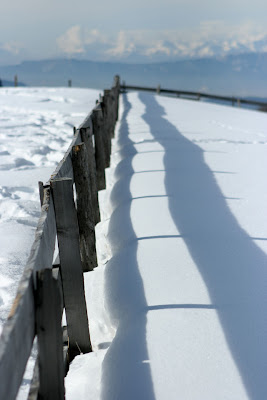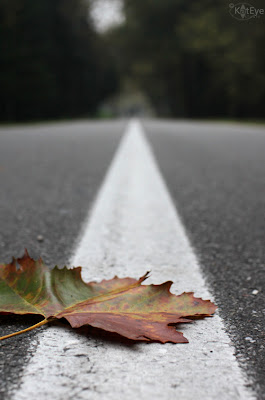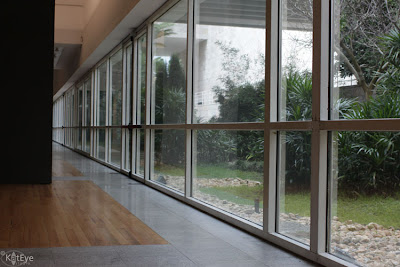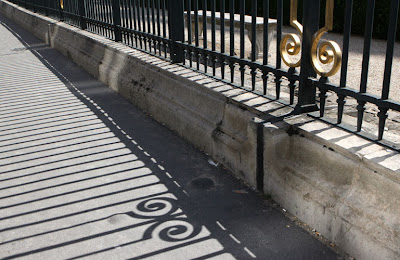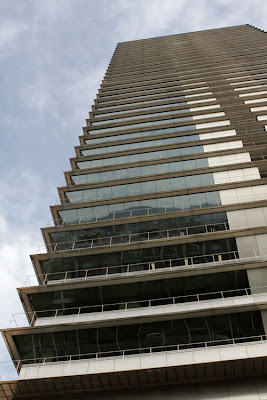I love linear perspective. I just love it. Perhaps it’s because of my engineering brain, the way that lines converge in the distance just fascinates me. It’s so orderly and predictable! Perhaps its because of my artistic brain, and how these lines can be used in interesting ways within the photographic frame. Perhaps it’s because we recently talked about diagonals, and this put lines in the forefront of my brain. Whatever the reason, I’ve been noticing linear perspective a lot lately so I thought it would be fun to pull out a “second edition” post and revisit Linear Perspective for this month’s Exploring with a Camera topic. With a few updates, of course! Enjoy!
Perspective is such a cool compositional concept! It takes advantage of how we see, the optical effects of lines over a distance. I remember learning the concept of perspective way back in my early art classes: Lines, when viewed across a distance, will converge to a vanishing point. Below is an example, from the Barcelona subway. If you were to continue all of the light lines in this photo, they would all meet somewhere at the edge of the tunnel. The perspective of the converging lines brings your eye right through the photo toward the vanishing point in this case.
When drawing, you need to make sure that your lines converge correctly or the drawing will look odd to the eye. In photography, we don’t have to worry about “making” the lines converge – they do that already – we can just take advantage of the effect. I’ll give you a few examples and variations on how to use linear perspective in your photographs.
Leading Lines
One of the simplest uses of linear perspective is as leading lines. In the subway station photo above, the lines all lead to the train emerging from the tunnel. In this scooter photo from back-alley San Francisco, the converging lines all lead to the scooter. In order to create this effect, I got down low to the ground, used a wide angle and moved my perspective so that the lines created by the streets and buildings all met behind the scooter. By moving myself, I was able to capture a point of view that put the scooter at the vanishing point of the lines.
Distance
To use perspective bring a sense of depth, include a long distance in the photograph so that the lines can converge more dramatically. This often means using a wide angle (smaller focal length, i.e. 24mm) instead of a zoom (longer focal length, i.e. 100mm), so that you capture the length of the diminishing lines. In the photo below from the Italian Alps, the diminishing lines of the fence give a sense of dramatic depth even though my depth of field (how much is in focus) is actually quite shallow. If I were zoomed in on the fence without the long lines moving into the distance, the photo would have a completely different feel.
While the lines of the Golden Gate and its shadow are slightly curved, they serve the same purpose. The converging lines lead you into the distance, across the bridge, to the land beyond.
Orientation
The orientation of your photograph, horizontal (landscape) versus vertical (portrait), will change how perspective effects the image. In the two examples below from Parco di Monza, note how the horizontal image emphasize the lines of the path while the vertical image emphasizes the height of the trees. Both use the diminishing perspective of the path and the trees, but in different ways. Placing a figure just about in the vanishing point makes for an interesting place for your eye to rest as it moves through the photo.
Composition
You can use linear perspective in so many different ways to get good composition – this is the really fun part! You can move the vanishing point in a photo to get dramatically different effects. Look closely at the examples above and below to see how the diminishing lines are used compositionally.
The photo below is from the Royal Palace in Madrid. The composition is very symmetric, with the lines converging in the center between the left and right. It is not symmetric from top to bottom, however. The focal point of the end of the hall is around the bottom third of the photo.
Here is another photo, this time from Amsterdam, with a left to right symmetry of the linear perspective.
This image from Parco di Monza is interesting – the perspective is symmetric left to right, but the leaf (the real subject) is not centered. The perspective here is not the focal point of the photo, it’s the backdrop for the leaf, but it certainly makes the photograph more interesting.
While a symmetric perspective can certainly bring a sense of peace and order to a photograph, linear perspective certainly doesn’t have to be used symmetrically. This image from the Berrardo museum in Lisbon, Portugal is more asymmetric in it’s lines.
Putting the vanishing point at the edge or corner of an image can make it very dynamic. I love the way all of the lines converge in the corner of this photo from Paris. The contrast of the repeating pattern of the fence provides an interesting counterpoint to the linear perspective. I’ve noticed in many of my photographs using perspective I also use repeating patterns, a topic I covered in an earlier Exploring with a Camera post.
You can also vary the point of view and effectively use converging lines. The lead in photograph of windows in Madrid or the skyscraper from Barcelona below are two examples of linear perspective looking up. The skyscraper below has an asymmetric composition while the Madrid window image at the top of the post is symmetric left to right. (I seem to like that composition!)
Isn’t this fun? Take a look at the world around you and your photos this next week with an eye toward linear perspective. You can link your findings in below through 23-June. Remember, knowledge grows when shared! By exploring and then sharing your findings with us, we all learn something new.



